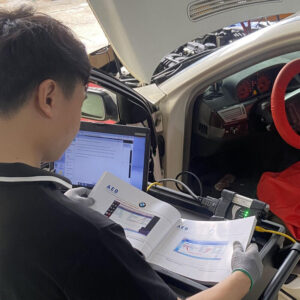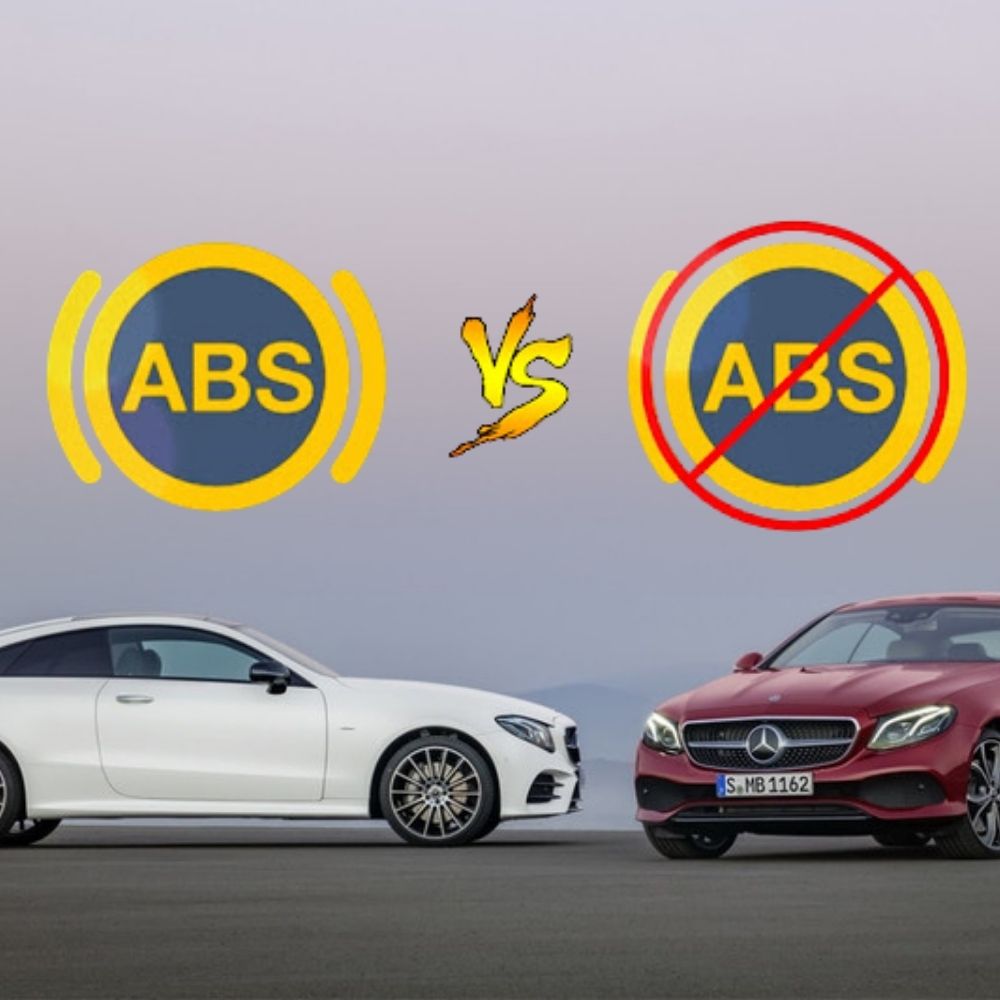
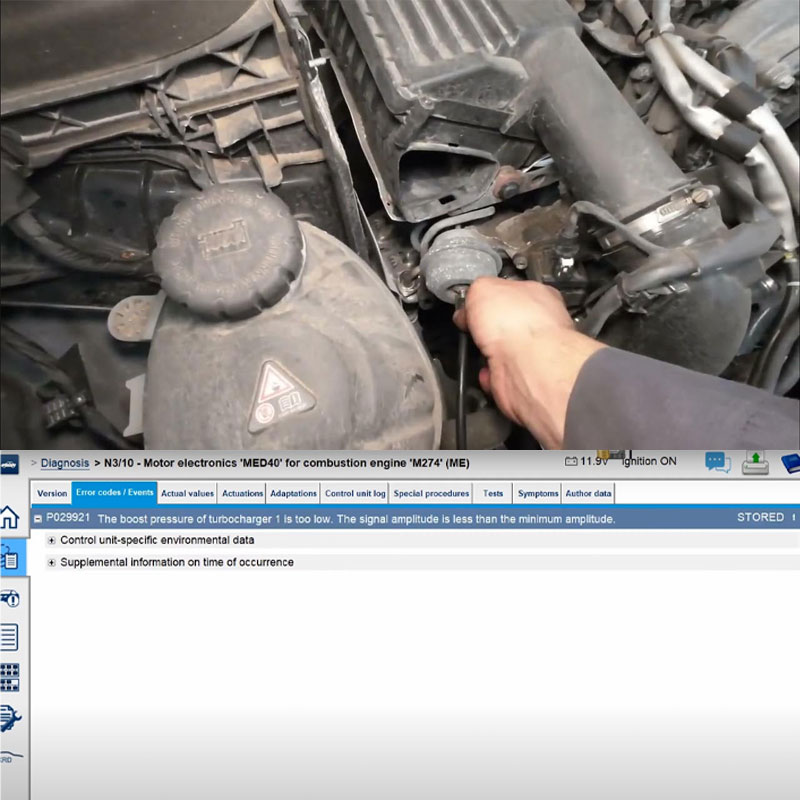
How to Fix Mercedes Benz DTC P029921
Contents
- 1. Understanding Mercedes-Benz DTC P029921
- Related Fault Codes
- 2. Symptoms of Mercedes Benz DTC P029921
- 3. Root Causes: Common Reasons for Mercedes Benz DTC P029921
- 3.1 Charge Air System Leaks: A Breach in the Boost Pathway
- 3.2 Turbocharger Wastegate Issues: Regulating Boost Gone Awry
- 3.3 Faulty Sensors: Misinformation Leading to Underperformance
- 3.4 Vacuum System Problems: Insufficient Force for Control
- 3.5 Turbocharger Mechanical Faults: Internal Issues Hindering Performance
- 3.6 Bypass Valve (Blow-Off Valve) Issues: Losing Pressure Prematurely
- 4. Diagnostic Steps for Mercedes Benz DTC P029921
- 4.1 Visual Inspection: Your First Line of Defense
- 4.2 Smoke Test: Revealing Hidden Leaks
- 4.3 Sensor Testing: Verifying Accuracy
- 4.4 Wastegate Actuator Test: Ensuring Proper Control
- 4.5 Vacuum System Check: Ensuring Adequate Force
- 4.6 Turbocharger Inspection: Assessing Mechanical Integrity
- 4.7 Exhaust Backpressure Test: Ruling Out Restrictions
- 5. Repair Strategies for Mercedes DTC P029921
- 5.1 Fix Charge Air Leaks: Sealing the Boost Pathway
- 5.2 Replace Faulty Components: Restoring Proper Functionality
- 5.3 Vacuum System Repairs: Ensuring Adequate Control Force
- 5.4 Turbocharger Replacement: When Internal Damage Occurs
- 5.5 Exhaust System Repairs: Removing Obstructions
- 6. Proactive Care: Preventive Measures for Long-Term Reliability
- Need Expert Help? Contact AutoExplain!
Experiencing sluggish acceleration or unexpected gear shifts in your Mercedes-Benz? The Mercedes Benz DTC P029921 signals that your Turbocharger 1 isn’t generating the necessary boost pressure. At autoexplain.com, we understand how crucial optimal engine performance is, and we’re here to provide a comprehensive breakdown of this fault, empowering you with the knowledge to diagnose and resolve it effectively. Let’s delve into the intricacies of this code, exploring its symptoms, potential causes, diagnostic procedures, and reliable repair solutions, ensuring your Mercedes-Benz regains its spirited performance. Addressing a low boost pressure fault promptly is vital for maintaining your vehicle’s efficiency and preventing further complications within the forced induction system.
1. Understanding Mercedes-Benz DTC P029921
The Mercedes-Benz diagnostic trouble code P029921 specifically indicates a “boost pressure of Turbocharger 1 is too low,” further specifying that “the signal amplitude is less than the minimum required.” This means the engine control unit (ECU) has detected that the actual boost pressure produced by the primary turbocharger is significantly below the expected or commanded level. This discrepancy triggers the fault code and potentially illuminates the Check Engine Light (MIL). Understanding this fundamental definition is the first step towards effective troubleshooting of this engine underboost detected condition. The ’21’ suffix often signifies a more precise description of the fault within the broader P0299 code family, highlighting the low signal amplitude as the key issue.
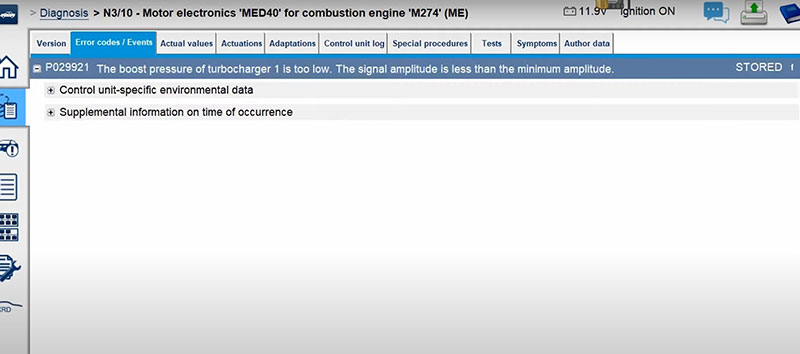
Related Fault Codes
-
P029900: Indicates a general underboost condition caused by mechanical faults in the turbocharger or associated components
-
P029909: Points to a component failure in the forced induction system, such as a malfunctioning wastegate actuator or boost pressure sensor
-
P023422: Indicates an overboost condition, often caused by a stuck wastegate or a defective boost pressure sensor providing incorrect readings
-
P2261/P2262: Relates to bypass valve (blow-off valve) issues that may cause improper boost regulation and lead to underboost conditions.
-
P0243-P0248: Covers wastegate solenoid malfunctions that can affect turbocharger performance.
=> Related content: How to Fix Mercedes-Benz DTC P029900
2. Symptoms of Mercedes Benz DTC P029921
When your Mercedes-Benz logs the P029921 code, you might observe several performance-related symptoms. Recognizing these signs early can aid in quicker diagnosis and prevent potential long-term issues associated with insufficient turbocharger boost.
-
Reduced Engine Performance or Sluggish Acceleration: This is often the most noticeable symptom. The engine may feel underpowered, especially during acceleration or when trying to overtake. The expected surge of power from the turbocharger might be absent.
-
Delayed Gear Shifting, Especially at Higher Speeds: The ECU relies on accurate engine load information, which is influenced by boost pressure, to make optimal gear shift decisions. Low boost can lead to the transmission hesitating or shifting inappropriately, particularly at higher speeds where turbocharger activity is more pronounced.
-
Possible Air Discharge Noise from the Engine Compartment While Driving: Leaks in the charge air system can sometimes produce a hissing or whistling sound as pressurized air escapes. This noise may be more apparent under acceleration when boost pressure is higher.
-
The Vehicle May Enter Limp Mode: In some cases, if the ECU detects a significant underboost condition that could potentially harm the engine, it may activate a safety feature called limp mode. This mode restricts engine power and speed to prevent further damage.
-
Check Engine Light (MIL) May or May Not Illuminate: While a P029921 code is logged, the severity of the underboost condition will determine if the MIL is activated. Intermittent or less severe underboost may not always trigger the light immediately.
3. Root Causes: Common Reasons for Mercedes Benz DTC P029921
Several factors can contribute to the Turbocharger 1 producing insufficient boost pressure. Identifying the precise cause is crucial for an effective and lasting repair of this forced induction underboost error.
3.1 Charge Air System Leaks: A Breach in the Boost Pathway
The charge air system is responsible for delivering compressed air from the turbocharger to the engine’s intake manifold. Any breach in this system can lead to a loss of boost pressure, resulting in a P029921 code.
-
Loose Hoses, Damaged Seals, or Missing Fasteners: Over time, the hoses connecting the turbocharger, intercooler, and intake manifold can become loose, their seals can degrade, or fasteners (like clamps) can loosen or go missing. These issues create escape routes for pressurized air.
-
Previous Repairs May Leave Clamps or Hoses Improperly Secured: If the charge air system was recently worked on, it’s possible that hoses or clamps were not correctly reinstalled or tightened to the proper torque specifications.
3.2 Turbocharger Wastegate Issues: Regulating Boost Gone Awry
The wastegate is a crucial component that regulates the turbocharger’s speed and, consequently, the boost pressure. Malfunctions in the wastegate system can prevent proper boost control.
-
A Faulty Wastegate Actuator Diaphragm or Vacuum Leaks: The wastegate actuator typically uses vacuum or pressure to control the opening and closing of the wastegate valve. A damaged diaphragm within the actuator or leaks in the vacuum lines controlling it can hinder its ability to function correctly, potentially leaving the wastegate open and bypassing exhaust flow needed to spin the turbo effectively.
-
The Wastegate Rod May Fail to Move Due to Actuator Issues: Corrosion, damage, or internal failure within the actuator can cause the wastegate control rod to seize or move erratically, preventing proper boost regulation.
3.3 Faulty Sensors: Misinformation Leading to Underperformance
The ECU relies on data from various sensors to manage engine operation, including boost pressure. Inaccurate readings from these sensors can lead to a perceived or actual low boost situation.
-
Malfunctioning MAP (Manifold Absolute Pressure) Sensors or Boost Pressure Sensors: These sensors directly measure the pressure in the intake manifold and the boost pressure generated by the turbocharger. If they provide readings lower than the actual pressure, the ECU might not command the turbo to produce more boost, or it might incorrectly detect an underboost condition.
-
Oil Contamination in Sensors: Oil leaks or excessive crankcase pressure can sometimes lead to oil contamination of these sensors, affecting their accuracy and potentially causing them to report lower-than-actual pressure readings.
3.4 Vacuum System Problems: Insufficient Force for Control
Many turbocharger control systems rely on vacuum to operate components like the wastegate actuator. Insufficient vacuum can directly impact turbocharger performance.
-
Insufficient Vacuum Pressure from the Vacuum Pump: A failing vacuum pump may not generate enough vacuum to properly actuate the wastegate, leading to underboost. Leaks in vacuum lines connected to other components can also reduce the vacuum available for turbo control.
3.5 Turbocharger Mechanical Faults: Internal Issues Hindering Performance
Physical damage or wear within the turbocharger itself can significantly reduce its ability to generate adequate boost pressure.
-
Damage to the Turbo Impeller Blades: Foreign object debris entering the intake or exhaust side of the turbocharger can damage the delicate impeller blades, reducing their efficiency in compressing air.
-
Excessive Free Play in the Shaft: Over time, the bearings supporting the turbocharger shaft can wear, leading to excessive axial or radial play. This can cause the impeller to rub against the housing, reducing efficiency and potentially causing further damage.
-
Clogged Exhaust Systems: Restrictions in the exhaust system, such as a partially blocked catalytic converter, can increase backpressure, hindering the turbocharger’s ability to spin freely and generate boost.
3.6 Bypass Valve (Blow-Off Valve) Issues: Losing Pressure Prematurely
The bypass valve, also known as a blow-off valve or diverter valve, is designed to release excess boost pressure when the throttle is suddenly closed. If this valve is stuck open or malfunctioning, it can leak boost pressure even under acceleration, leading to a boost pressure negative deviation.
4. Diagnostic Steps for Mercedes Benz DTC P029921
A methodical approach to diagnosing the P029921 code is essential for pinpointing the exact cause. Here are step-by-step procedures that experienced auto mechanics and even aspiring technicians can follow.
4.1 Visual Inspection: Your First Line of Defense
Begin with a thorough visual inspection of the engine compartment, paying close attention to the components related to the turbocharger and charge air system.
-
Check all charge air pipes, hoses, and clamps for leaks or damage. Look for cracks, splits, loose connections, or signs of oil residue around joints, which can indicate a leak. Pay particular attention to areas where hoses connect to the turbocharger, intercooler, throttle body, and intake manifold.
-
Inspect intercooler connections for loose fittings or cracks. The intercooler is susceptible to damage from road debris. Carefully examine its end tanks and connections for any signs of leaks or physical damage.
4.2 Smoke Test: Revealing Hidden Leaks
A smoke test is an invaluable tool for identifying even small, hard-to-find leaks in the charge air system.
-
Use a smoke machine to introduce a safe, visible smoke into the intake system. With the engine off and the system sealed, any leaks will allow smoke to escape, revealing their location. Even seemingly minor leaks can contribute to underboost conditions.
4.3 Sensor Testing: Verifying Accuracy
Using a diagnostic scan tool, you can check the readings from the MAP and Boost Pressure Sensors.
-
Verify MAP and Boost Pressure Sensor readings using a diagnostic tool. With the engine off (Key On Engine Off – KOEO), both sensors should read approximately atmospheric pressure (around 101 kPa or 14.7 psi at sea level). Significant deviations indicate a faulty sensor.
-
Inspect sensors for oil contamination and clean if necessary. If the sensors are coated in oil, gently clean the sensing element with a sensor-safe cleaner. Note if there is excessive oil present, as this could indicate an underlying issue like a failing turbocharger seal or excessive crankcase pressure.
4.4 Wastegate Actuator Test: Ensuring Proper Control
Testing the wastegate actuator will determine if it’s functioning correctly.
-
Perform a vacuum test on the wastegate actuator diaphragm. Disconnect the vacuum line leading to the actuator and use a hand-held vacuum pump to apply vacuum. The actuator rod should move smoothly and hold vacuum. A leaking diaphragm will not hold vacuum, indicating a need for replacement.
-
Use a scan tool to activate the wastegate control rod and confirm its movement. Some advanced scan tools allow you to command the wastegate actuator to move. Observe if the rod moves freely and to the expected positions.
4.5 Vacuum System Check: Ensuring Adequate Force
A vacuum gauge can be used to assess the health of the vacuum system.
-
Measure vacuum pressure at various points in the system using a gauge. Connect the gauge to vacuum lines near the vacuum pump and at the wastegate actuator. Ensure at least 750 mBar (approximately 11 psi) of vacuum is available at critical points for proper operation of vacuum-controlled components. Low vacuum could point to a failing pump or leaks in the vacuum lines.
4.6 Turbocharger Inspection: Assessing Mechanical Integrity
A physical inspection of the turbocharger can reveal potential mechanical issues.
-
Spin the turbo impeller manually to check for free play or damage. With the intake hoses removed, gently spin the compressor wheel by hand. It should spin freely with minimal resistance. Check for excessive axial (in and out) or radial (side to side) play in the shaft. Significant play indicates worn bearings.
-
Use a borescope to inspect both intake and exhaust impeller blades for wear or obstruction. A borescope can allow you to visually inspect the compressor and turbine wheels for any signs of damage, such as bent or broken blades, or obstructions caused by debris.
4.7 Exhaust Backpressure Test: Ruling Out Restrictions
Excessive backpressure can impede turbocharger performance.
-
Check for excessive backpressure caused by a clogged catalytic converter or exhaust restrictions. This test typically involves installing a pressure gauge before the catalytic converter. High readings indicate a blockage.
5. Repair Strategies for Mercedes DTC P029921
Once the root cause of the P029921 code is identified, implementing the appropriate repair solutions is crucial for restoring optimal turbocharger performance and vehicle reliability.
5.1 Fix Charge Air Leaks: Sealing the Boost Pathway
Addressing leaks in the charge air system is often a primary step in resolving underboost issues.
-
Replace damaged hoses, seals, or clamps in the charge air system. Ensure that replacement parts are of high quality and designed for the specific application.
-
Repair or replace leaking intercoolers as necessary. Depending on the severity of the damage, an intercooler may be repairable, but in many cases, replacement is the most reliable solution. Ensure all connections are properly tightened to the manufacturer’s specifications.
5.2 Replace Faulty Components: Restoring Proper Functionality
Replacing malfunctioning sensors and valves is essential for accurate readings and proper control of the turbocharger system.
-
Replace defective MAP sensors, boost pressure sensors, or bypass valves (blow-off valves). Use genuine Mercedes-Benz or reputable aftermarket parts to ensure compatibility and reliability.
-
Replace a faulty wastegate actuator if it fails vacuum tests or exhibits improper movement. When replacing the actuator, ensure the new unit is properly calibrated according to the vehicle’s specifications.
5.3 Vacuum System Repairs: Ensuring Adequate Control Force
Addressing vacuum leaks and pump failures is crucial for the proper operation of vacuum-controlled turbocharger components.
-
Repair any leaks in vacuum lines. Inspect all vacuum hoses for cracks, breaks, or loose connections and replace them as needed.
-
Replace a failing vacuum pump if it cannot generate sufficient pressure. Ensure the replacement pump meets the vehicle’s vacuum requirements.
5.4 Turbocharger Replacement: When Internal Damage Occurs
If the turbocharger itself has suffered mechanical damage, replacement is typically the only viable solution.
-
If mechanical faults are found in the turbocharger (e.g., damaged impellers), replace it entirely. Ensure the replacement turbocharger is the correct part number for the vehicle. Follow the manufacturer’s installation instructions carefully, including proper lubrication and torque specifications.
-
Note: On some models with M274 engines, wastegate actuators are integrated into the turbocharger assembly and cannot be replaced separately. In such cases, a faulty actuator necessitates complete turbocharger replacement.
5.5 Exhaust System Repairs: Removing Obstructions
Addressing restrictions in the exhaust system can improve turbocharger performance.
-
Clear blockages in the catalytic converter or other exhaust components that may restrict flow. Depending on the nature of the blockage, this may involve cleaning or replacing the affected component.
6. Proactive Care: Preventive Measures for Long-Term Reliability
Implementing preventive maintenance measures can help avoid future occurrences of the P029921 code and ensure the long-term reliability of your Mercedes-Benz turbocharger system.
-
Regularly inspect and maintain charge air piping and clamps during routine service. Check for any signs of wear, damage, or looseness and address them promptly.
-
Clean MAP and Boost Pressure Sensors periodically to prevent oil contamination. Follow the manufacturer’s recommendations for cleaning these sensors.
-
Ensure proper torque and alignment of all components after repairs to avoid future leaks. Adhering to manufacturer specifications during any maintenance or repair work is crucial.
Need Expert Help? Contact AutoExplain!
If you’re facing Mercedes-Benz DTC P029921 and need expert assistance, AutoExplain is here to help! We specialize in car diagnostics, coding, and programming and offer 24/7 online support.
📞 Contact us via WhatsApp: +1(936)2896695
Let our experts guide you through the repair process and get your Mercedes-Benz back to peak performance! 🚗💨

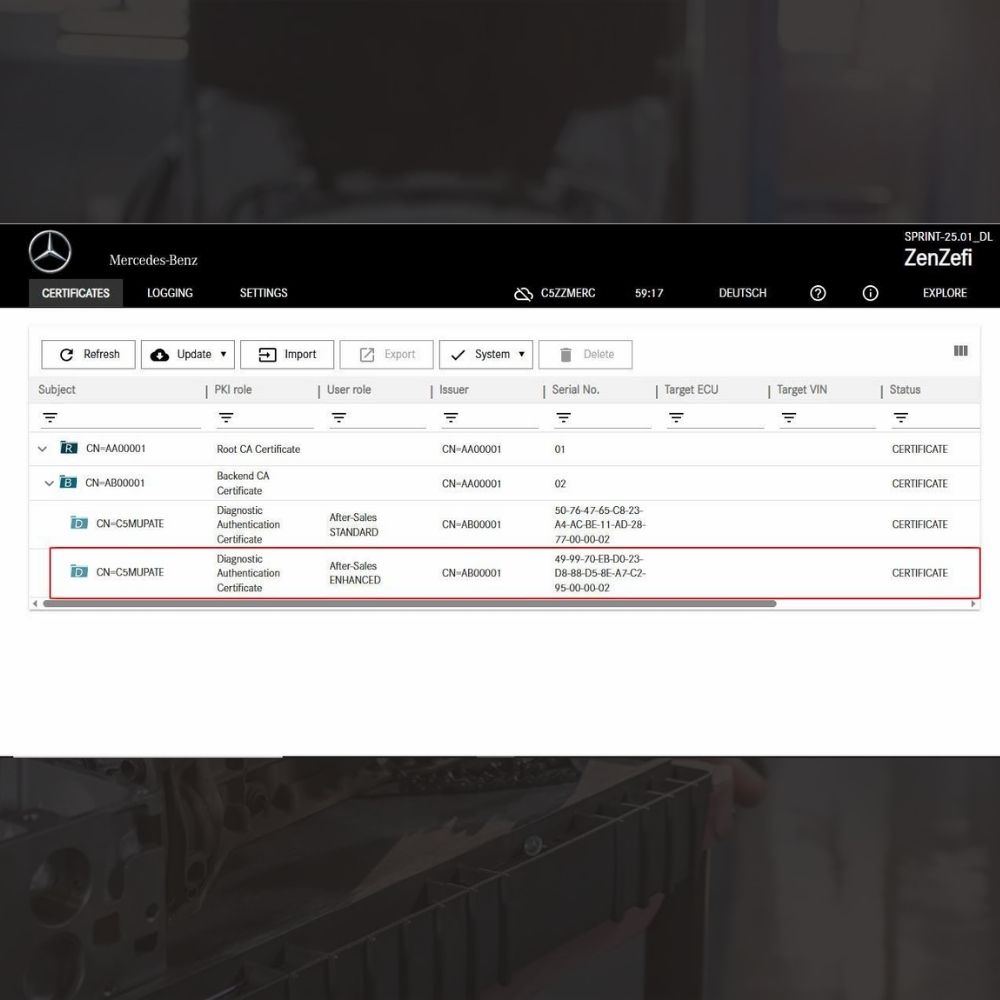
New Mercedes Car Coding Solution with ZenZefi certificate for DTS Monaco 9.02
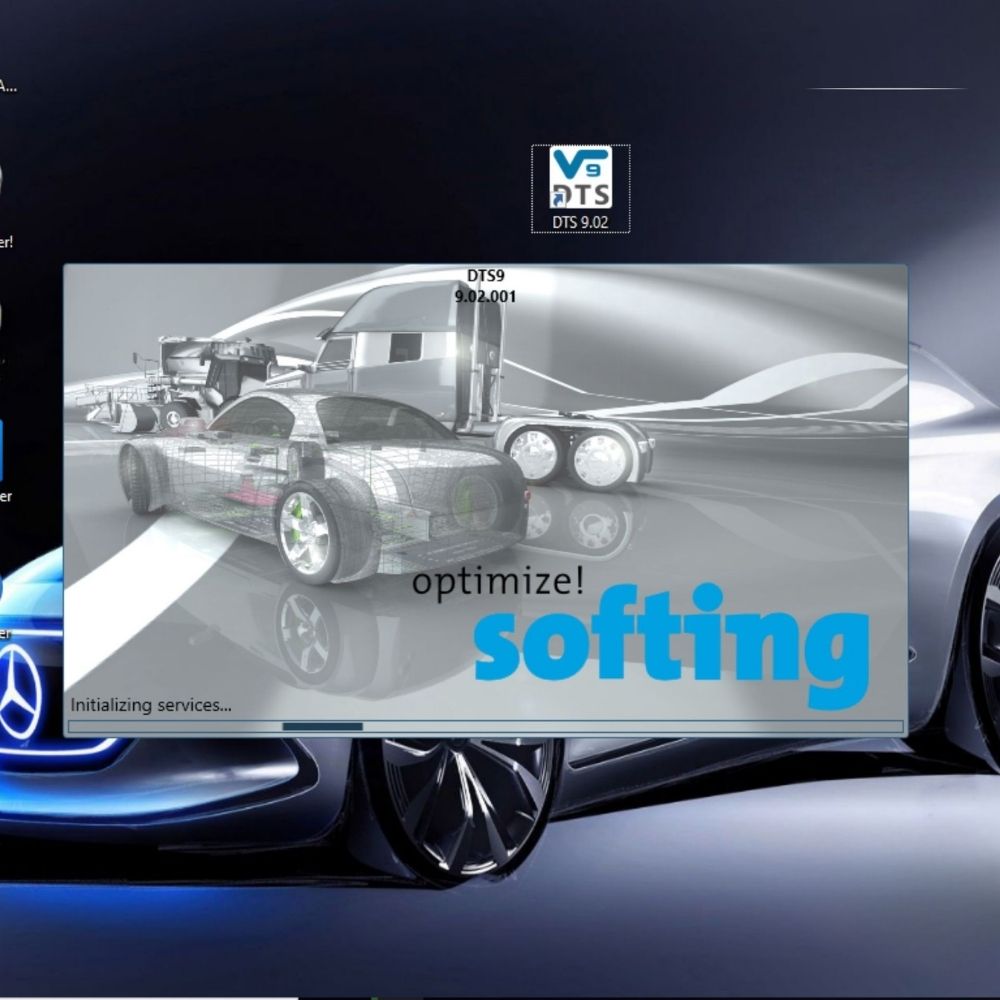
What is DTS Monaco? Key Functions of DTS Monaco Software
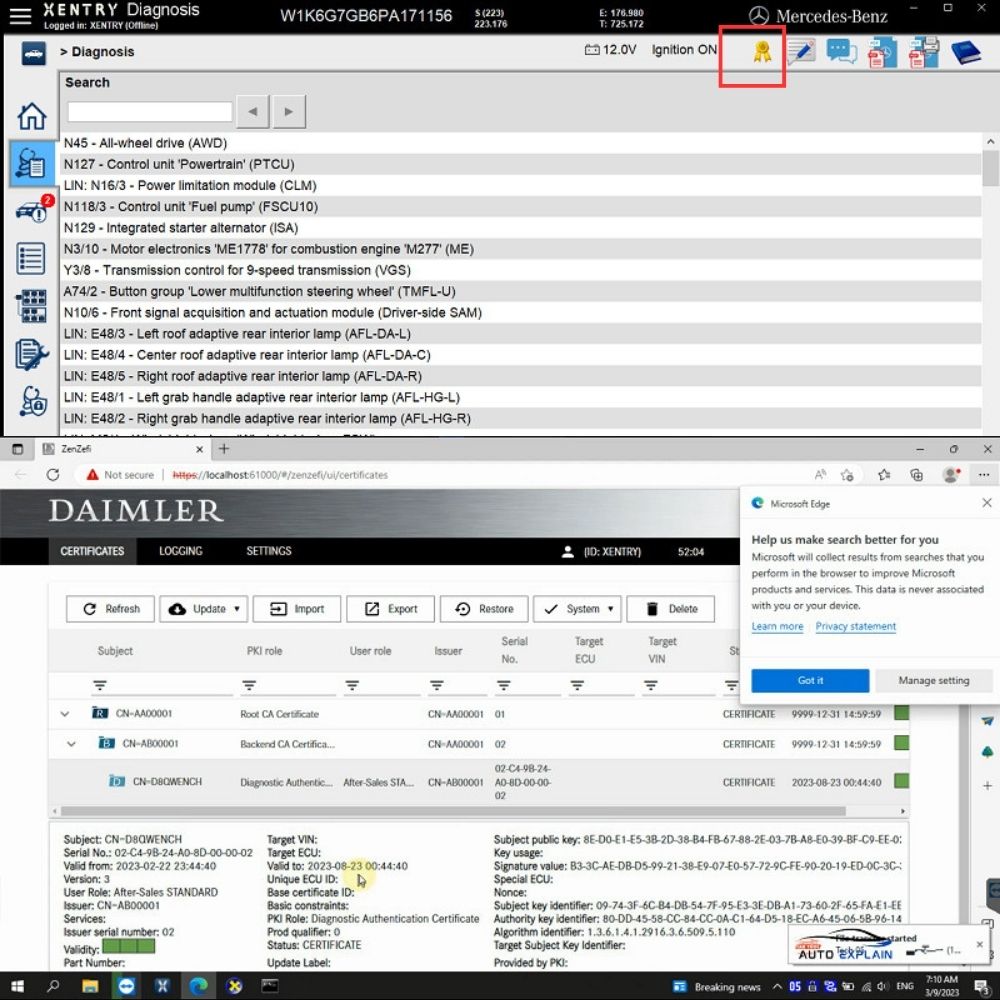
What is the Xentry Certificate Zenzefi? Why You Need It, and When It Is Required?



New Mercedes Car Coding Solution with ZenZefi certificate for DTS Monaco 9.02



